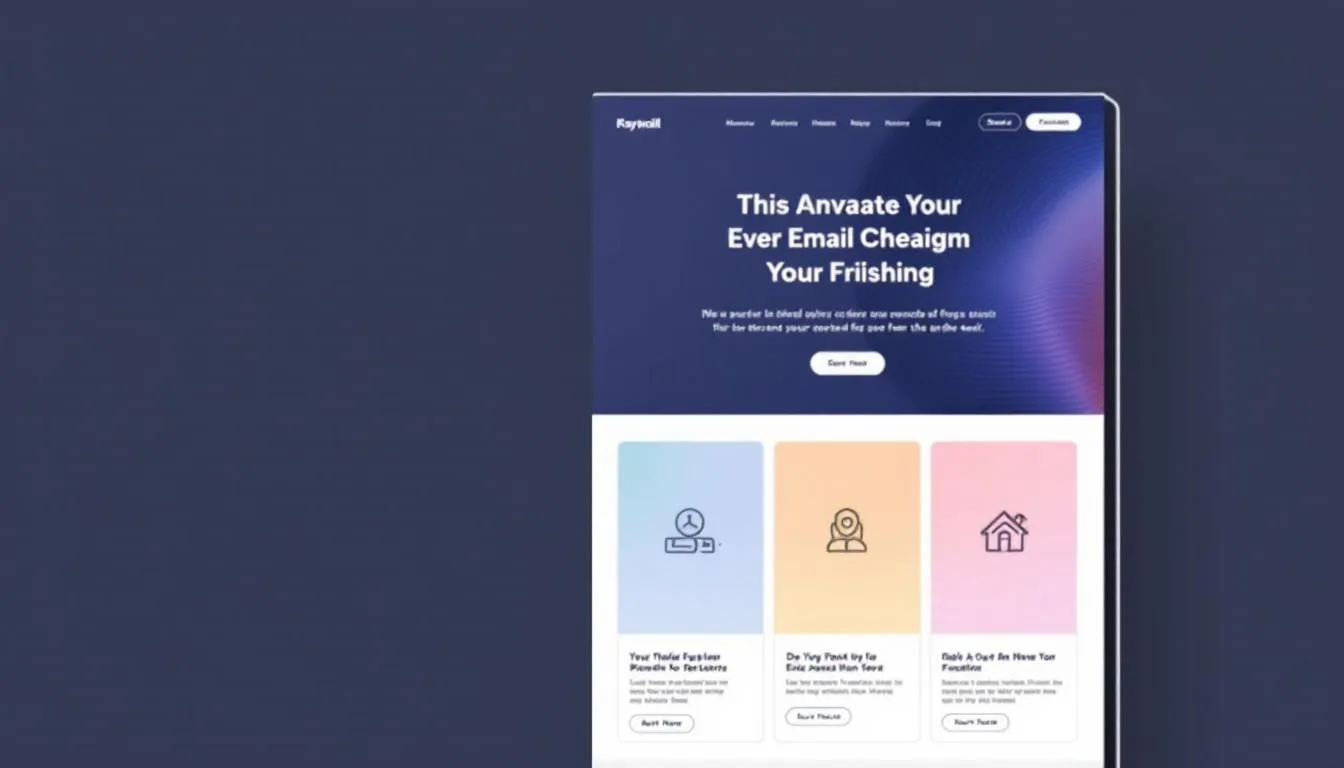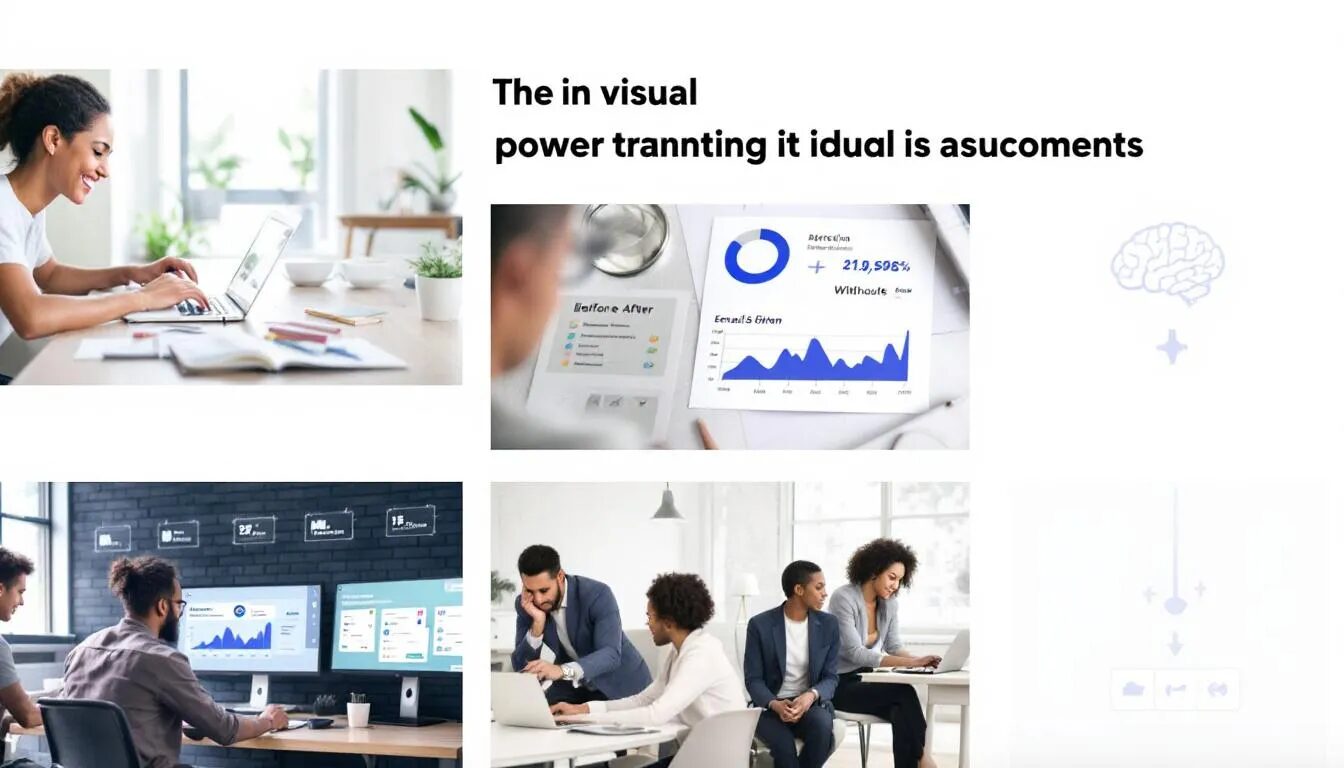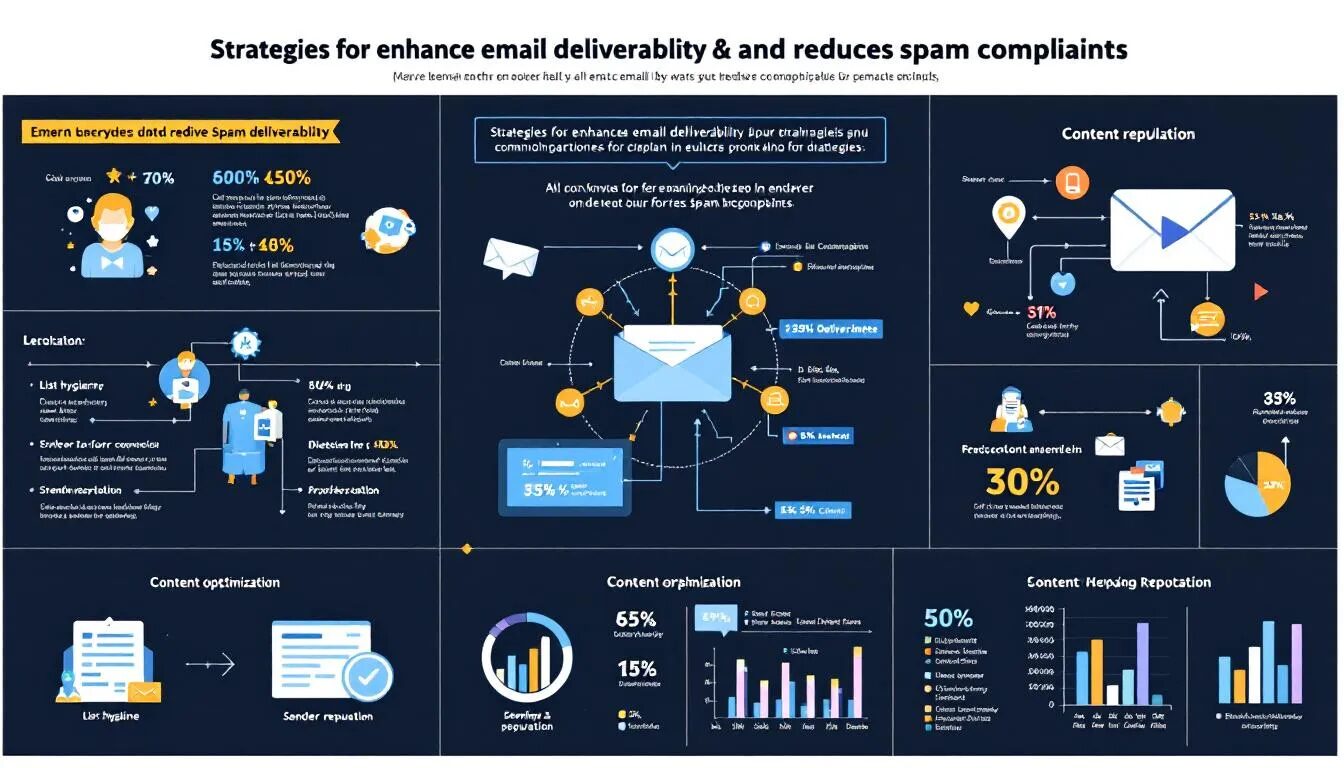
Mastering the Art of Storytelling in Email Marketing: A Step-by-Step Guide
The art of storytelling in email marketing is a powerful tool to capture your audience’s attention and foster emotional connections. This article will guide you through how to utilize the art of storytelling in email marketing to transform your email campaigns from mundane promotions into engaging narratives that build customer loyalty and drive engagement.
Key Takeaways
- Storytelling transforms email marketing by creating emotional connections and enhancing audience engagement, making emails more than just promotional messages.
- Key elements of effective narratives include personalization, visual storytelling, mobile optimization, and a clear structure to maximize impact and improve user experience.
- Incorporating customer stories and testimonials builds trust, fosters loyalty, and encourages engagement, while automated emails maintain consistent storytelling and enhance customer relationships.
The Power of Storytelling in Email Marketing

Storytelling in email marketing is essential for engaging audiences and creating lasting impressions. When we think about the brands that have captured our hearts and minds, it’s often their stories that resonate deeply with us. It’s not just about selling a product or service; it’s about connecting on an emotional level. Incorporating storytelling into your email marketing campaigns differentiates your brand in a competitive market and builds stronger customer relationships.
Interactive content can elevate your storytelling efforts, making your emails more engaging and memorable. Examples of interactive content include:
- Videos
- Quizzes
- Interactive infographics Adding an element of interactivity can draw your audience in and keep them engaged. This not only enhances the user experience but also encourages higher engagement rates, leading to more successful email marketing campaigns.
One of the most powerful aspects of storytelling is its ability to create emotional connections. When you tell a compelling story, you evoke emotions that can enhance customer loyalty and engagement. These great stories and emotional connections are what turn casual subscribers into loyal customers who are not only willing to make a purchase but also to advocate for your brand by telling stories.
Incorporate storytelling into your email marketing strategy can transform your emails from mere promotional messages into captivating narratives that your audience looks forward to. With the right approach, your marketing emails can become a powerful tool for building brand loyalty and keeping customers engaged over the long term.
Key Elements of a Compelling Narrative
Crafting a compelling narrative is at the heart of effective storytelling. A good story has the power to captivate, inspire, and motivate your audience. To achieve this, it’s essential to understand the key elements that make up a compelling narrative. Personalization is a crucial aspect, as it involves customizing content based on individual preferences and behaviors, which enhances relevance and engagement.
Visual storytelling plays a significant role in creating a narrative that connects emotionally with your audience. Using design elements like images and layouts creates an immersive experience that resonates on a deeper level. Consistency across your email design is also vital, as it builds brand recognition, trust, and familiarity with your audience.
Mobile optimization is another critical element, given that a significant majority of emails are accessed on mobile devices. Ensuring your emails are responsive and easy to navigate on mobile devices can significantly improve user experience and engagement. A/B testing and optimization are equally important, as they allow you to refine your emails based on user behavior, improving performance over time.
Incorporating these key elements into your email marketing strategy helps create stories that capture attention and foster a deeper connection with your brand. Whether you’re telling brand stories, customer stories, or any other compelling narrative, these elements will help you craft messages that resonate and drive engagement.
Crafting Your Brand’s Story

Crafting your brand’s story is a fundamental step in building a strong connection with your audience. Unique and authentic brand stories can significantly influence consumer purchasing decisions by making your brand more relatable and trustworthy. One effective approach is to use the art of storytelling frameworks, such as the hero’s journey, which can help structure your brand narrative in a compelling way.
Incorporating relatable details and a clear story arc enhances the memorability and engagement of your brand’s story. For example, utilizing executive bios can make your brand story more relatable and approachable, allowing your audience to connect with the people behind the brand. Testing your brand story with target audiences can provide critical feedback to refine your message for better resonance.
Visual elements play a crucial role in representing your brand’s identity and brand’s values. Choosing visuals that resonate with your target audience can enhance brand connection and appeal. Additionally, highlighting product benefits through storytelling can make them more relatable and compelling.
Crafting a well-structured and authentic brand story builds brand loyalty and keeps customers engaged. This not only helps in reaching customers but also in maintaining a lasting relationship with them through your email marketing efforts.
Using Customer Stories to Build Trust
Using customer stories is a powerful way to build trust and credibility with your audience. Nonprofit organizations effectively use storytelling to emotionally connect with potential donors, demonstrating the impact of their work and fostering loyalty. Similarly, incorporating customer testimonials in email marketing can significantly improve credibility and foster trust among potential customers.
Sharing customer stories can help marketers convey product effectiveness without sounding overly promotional. By highlighting real experiences and success stories, you can create a compelling narrative that resonates with your audience and drive sales. Video testimonials, in particular, enhance trustworthiness by allowing potential customers to see and hear real experiences, adding a human touch to your emails as a marketing manager.
Including community involvement stories in your emails can foster loyalty and encourage interaction from subscribers. These stories not only showcase your brand’s commitment to social responsibility but also create an emotional connection with your audience, leading to increased customer engagement and conversions.
Incorporating customer stories into your email marketing strategy strengthens connections with your audience, drives sales, and enhances customer loyalty. These stories serve as powerful tools for keeping customers engaged and building brand trust.
Structuring Your Emails for Maximum Impact

Structuring your emails effectively is crucial for maximizing their impact. Articulating a clear value proposition helps capture the reader’s attention and demonstrates the benefits of your offerings. Placing important information at the top of your email ensures that key messages are seen first, increasing the likelihood of engagement.
Using a single-column layout enhances navigation, especially for users on mobile devices, ensuring a better user experience. Incorporating larger font sizes will improve readability on mobile devices, making it easier for readers to consume content. A clear call to action that is easily clickable and visible without scrolling is essential for encouraging immediate user responses.
Key aspects of effective email design include:
- Using whitespace to prevent clutter and improve readability.
- Including contact details and clear unsubscribe options in the email footer to enhance transparency and trust.
- Making content scannable and placing descriptive links strategically within the email body to improve campaign effectiveness.
Following these best practices ensures that your emails are visually appealing and highly effective in engaging your audience and driving desired actions in a successful email marketing campaign.
Personalization: Tailoring Stories to Your Audience
Personalization is a key factor in enhancing the impact of your email marketing campaigns. Tailoring content to individual subscriber preferences fosters a deeper connection and engagement with your audience. Personalizing the email header with the recipient’s name can create a more engaging experience. Similarly, personalizing subject lines by including customer names or relevant details can enhance engagement and increase open rates.
Dynamic content in emails automatically adjusts based on the recipient’s data, making the targeted emails more relevant and personalized. Utilizing customer relationship management effectively allows for the creation of dedicated emails and transactional emails that feel tailored to the individual, enhancing the recipient’s experience.
Segmentation groups email lists into focused categories based on criteria such as demographics and engagement, allowing for more targeted audience email campaigns. Improving subscription forms to collect more customer data can enhance the personalization of email campaigns. Understanding your audience’s demographics helps create relevant content for emails, increasing the likelihood of opens and engagement.
Incorporating personalization into your email marketing strategy creates compelling narratives that resonate with your specific audience and drive higher engagement through personalized emails.
Visual Storytelling: Enhancing Your Narrative with Images

Visual storytelling is a powerful way to enhance your narrative and create emotional connections with your audience through descriptive language. By using design elements like images and layouts, you can create engaging narratives that resonate emotionally with your audience. The choice of images should align with the overall messaging of the campaign to ensure cohesive branding.
Including faces in images can significantly increase engagement, as photos of people tend to receive more likes and interactions on social media. Graphics and infographics are also deemed the most engaging visual content by a substantial percentage of marketers. These visual elements not only make your emails more appealing but also help convey your message more effectively.
Incorporating visual storytelling into your email marketing strategy evokes emotions and creates a more immersive experience for your audience. This not only enhances the overall impact of your emails but also helps in building a stronger connection with your audience.
Subject Lines that Capture Attention
Subject lines are the first thing recipients see in their inbox, making them a crucial element in email marketing. Emails that include personalized subject lines experience over a 20% increase in open rates compared to generic ones. A clear subject line that specifies the content can significantly increase open rates and ensure that your message gets read.
Using questions in subject lines can generate curiosity and encourage recipients to open the email. Shorter subject lines, ideally between 30-50 characters, tend to perform better in terms of open rates. It’s also important to avoid using words commonly associated with spam to bypass filters and ensure your emails reach the audience’s inbox.
Crafting attention-grabbing subject lines improves the effectiveness of your email marketing campaigns and increases engagement with your audience.
Measuring the Success of Your Storytelling Efforts

Measuring the success of your storytelling efforts is essential to understand how well your email marketing campaigns are performing. Open rates reflect how frequently recipients engage with marketing emails based on the total sent during a campaign. The conversion rate shows how effectively traffic from emails leads to desired actions like purchases or form submissions, while the click through rate provides additional insight into engagement levels.
Key points about email marketing include:
- Personalized email content can lead to a 139% increase in click rates, enhancing overall engagement.
- Triggered emails, which respond to specific customer actions, can significantly improve engagement and sales.
- Forward and sharing rates measure how often email recipients share or forward the content to others, indicating the value and relevance of your email campaign, email marketing platforms, email marketing tool, email marketing services, and digital marketing.
Key email marketing metrics include:
- Unsubscribe rate: signals issues with email frequency or content relevance.
- List growth rate: assesses changes in your email list over time, reflecting lead capture effectiveness.
- Spam complaint rate: indicates the health of your email list.
- Bounce rate: also indicates the health of your email list and the success of your deliverability efforts.
Tracking these key metrics provides valuable industry insights into the effectiveness of your storytelling efforts and informs data-driven refinements to improve future campaigns using Google Analytics and detailed analytics.
Best Practices for Avoiding Spam Folders
Avoiding spam folders is crucial for the success of your email marketing campaigns. Only send welcome emails to email subscribers who have opted in to receive them to ensure your emails are welcome and expected. Monitoring your sender reputation and spam score is crucial for ensuring your confirmation emails reach the audience’s inbox, especially to avoid unsolicited emails.
To maintain good email practices and avoid being flagged as spam:
- Limit the frequency of emails you send.
- Consistently send emails on a regular schedule to maintain engagement.
- Ensure that your sender information is clear and accurate to avoid misleading recipients.
- Include your physical address in emails, as required by the CAN-SPAM Act, to enhance transparency and trust.
Avoid using subject lines that contain words commonly associated with spam to bypass filters and ensure your emails reach the audience’s inbox. Following these best practices improves your email deliverability and ensures that your emails are seen by your audience.
Leveraging Automated Emails for Consistent Storytelling
Leveraging automated emails is an effective way to ensure consistent storytelling in your email marketing efforts. Email automation allows businesses to send targeted, timely messages based on specific user behaviors. A key benefit of email marketing automation is that it easily sends targeted messages at optimized times, improving engagement and conversions.
Trigger events, like signing up for a newsletter or making a purchase, activate automated email workflows. There are various types of campaigns that can be automated. These include cart abandonment emails, welcome series, and cross-sell campaigns. Analytics tools track performance metrics like open and click-through rates, informing strategies for improvement.
Drip campaigns deliver a series of scheduled emails that gradually inform prospects without overwhelming them. Leveraging automated emails and lead nurturing emails maintains a consistent narrative and keeps your audience engaged over time in your marketing campaign.
Summary
In conclusion, mastering the art of storytelling in email marketing is a powerful way to engage your audience, build brand loyalty, and drive conversions. By understanding the power of storytelling, crafting compelling narratives, and personalizing your messages, you can transform your email marketing campaigns into engaging experiences that resonate with your audience. Visual storytelling, attention-grabbing subject lines, and proper email structuring further enhance the impact of your emails.
Measuring the success of your storytelling efforts and following best practices to avoid spam folders ensure that your emails reach and resonate with your audience. Leveraging automated emails for consistent storytelling allows for ongoing engagement and relationship building. By incorporating these strategies into your email marketing efforts, you can create memorable and impactful communications that drive long-term success.
Frequently Asked Questions
Why is storytelling important in email marketing?
Storytelling is crucial in email marketing as it fosters emotional connections with your audience, enhancing relatability and memorability. This approach ultimately drives customer loyalty and engagement.
How can I personalize my email marketing campaigns?
To effectively personalize your email marketing campaigns, incorporate the recipient’s name in the header and subject line, tailor the content to match their preferences and behaviors, and utilize dynamic content that adapts based on their data. This targeted approach enhances engagement and improves campaign outcomes.
What are some key metrics to measure the success of my email marketing campaigns?
To effectively gauge the success of your email marketing campaigns, focus on key metrics such as open rates, click-through rates, conversion rates, and unsubscribe rates. These indicators will provide valuable insights into your audience engagement and campaign effectiveness.
How can I avoid my emails ending up in spam folders?
To prevent your emails from landing in spam folders, ensure you’re sending to opt-in subscribers, maintain a good sender reputation, limit the frequency of your emails, use clear sender information, and avoid spammy language in subject lines. Implementing these practices will enhance your email deliverability.
What are the benefits of using automated emails in my email marketing strategy?
Automated emails enhance your email marketing strategy by enabling targeted and timely messages based on user behaviors, ensuring consistent engagement, and allowing for performance tracking. This approach helps nurture prospects effectively without overwhelming them.
Want More Tips?
Looking for Check out our latest guides and resources to elevate your marketing game
© 2025, VerticalResponse. All rights reserved.



